During the Covid-lock-down, I decided to focus on my soul’s journey; in this outwardly imposed self-isolation, I focussed on my inner process. Only weeks before, my 99-year-old mother had died, and with her passing, the whole story of my being a replacement child, acquired a new significance. I was able to step out of a kind of grief-prison and discover new forms of life.
Thankfully, I had been reconciled with my mother, before she died. I replaced a two-year-old boy, who had died of appendicitis, and I was the girl born after – expected to comfort my mother over her loss and make her come alive again, but of course I could not. Instead, we were both locked into a non-loving relationship. My first “Grief Wall” was made in 1999. It was the lower section of a larger complex picture called “The Grievers”. This is no. 19 in the series of 24, which can be seen at carolinemackenzie.co.uk/the art of grieving, where I expressed my then still unconscious suffering.
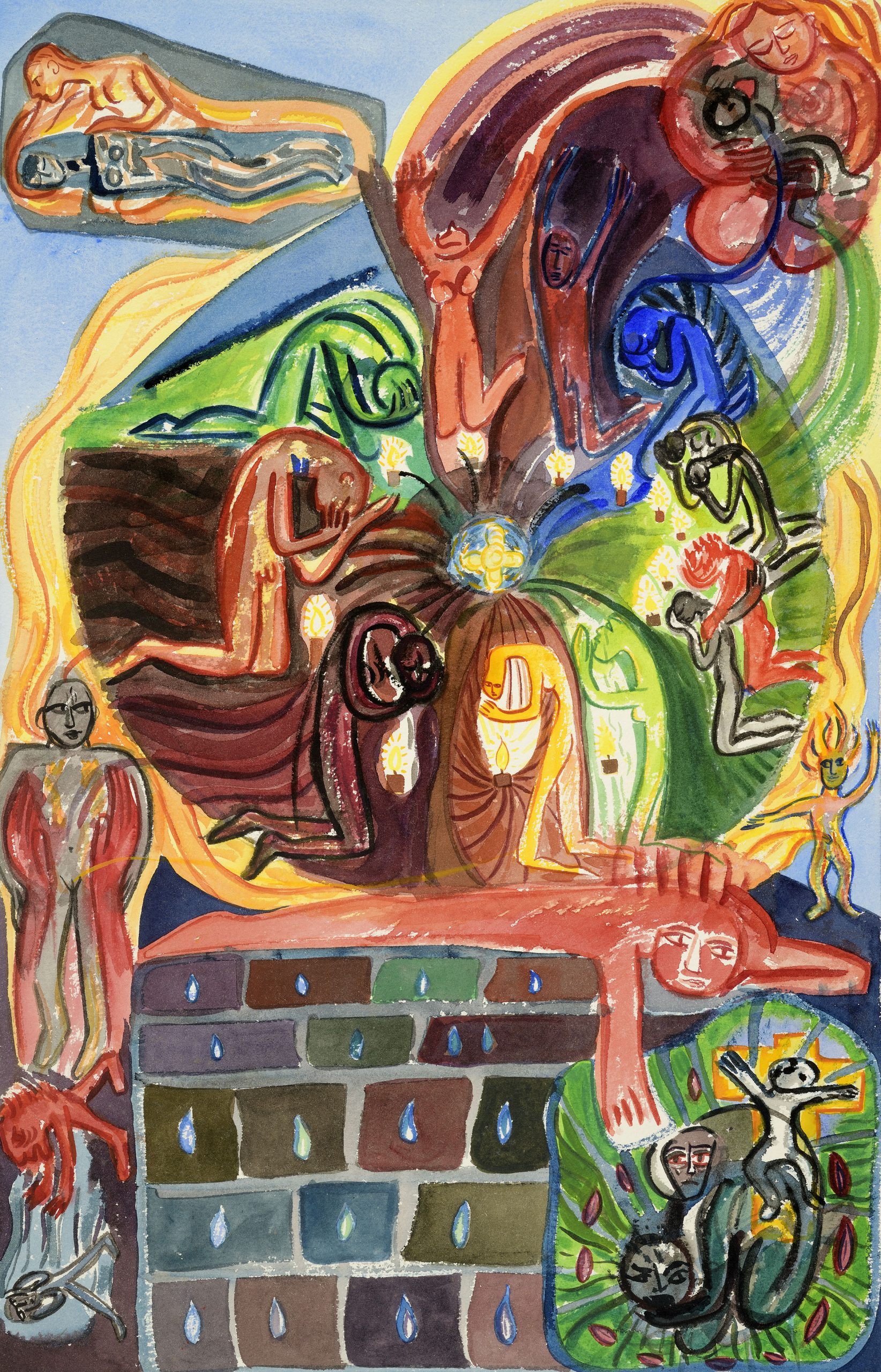
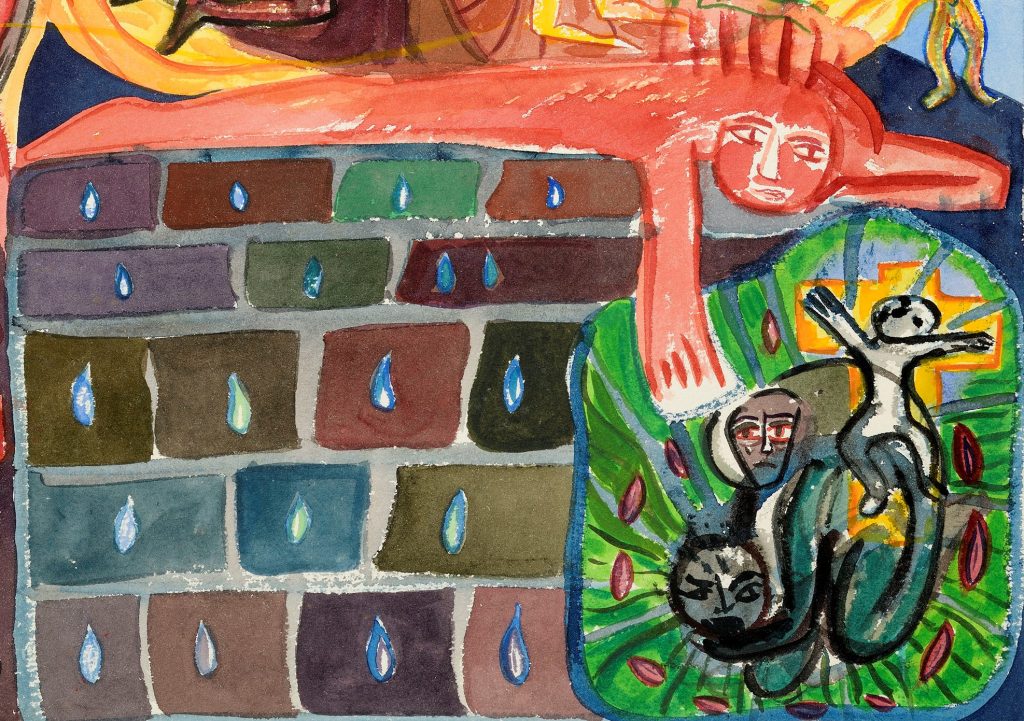

In this new version of The Grief Wall, photographed by myself, I no longer identified exclusively with the Red Girl, as I had done in 1999. Now, as in a dream, in this new picture, I consciously experienced the four figures as aspects of my Self. In the original spontaneous outburst of my unconscious images, in my painting in 1999, I had seen the other figures in the circle to the right, as my mother and my brother in the agony of dying. Now, I identified these figures as my Survivor’s Guilt “(lower left), my Depression (Center) and my suffering (girl on the cross).
I experienced a transition, I no longer split off these aspects of my deeply buried Self but I managed to get re-connected with them. It was Easter 2020, the time for renewal, and the Christian ritual of foot washing played a major role. I very consciously set aside the time to do the Maundy Thursday readings and ritual so as to coincide with times that the virtual Mass was happening in my parish church. This had two benefits. First, I felt held within an archetypal pattern that has been enacted over the centuries. Second, my attention was not wrapped up in being part of the congregation and, since mine is a Catholic setting, watching the male priest take the initiative in washing the feet. This would have de-centered me from paying attention to my inner Self. I recorded my activities in the following drawings.
Guilt is a major factor in the replacement child’s inner world, it is as big an issue as grief, and both grief and guilt can combine to give rise to depression.
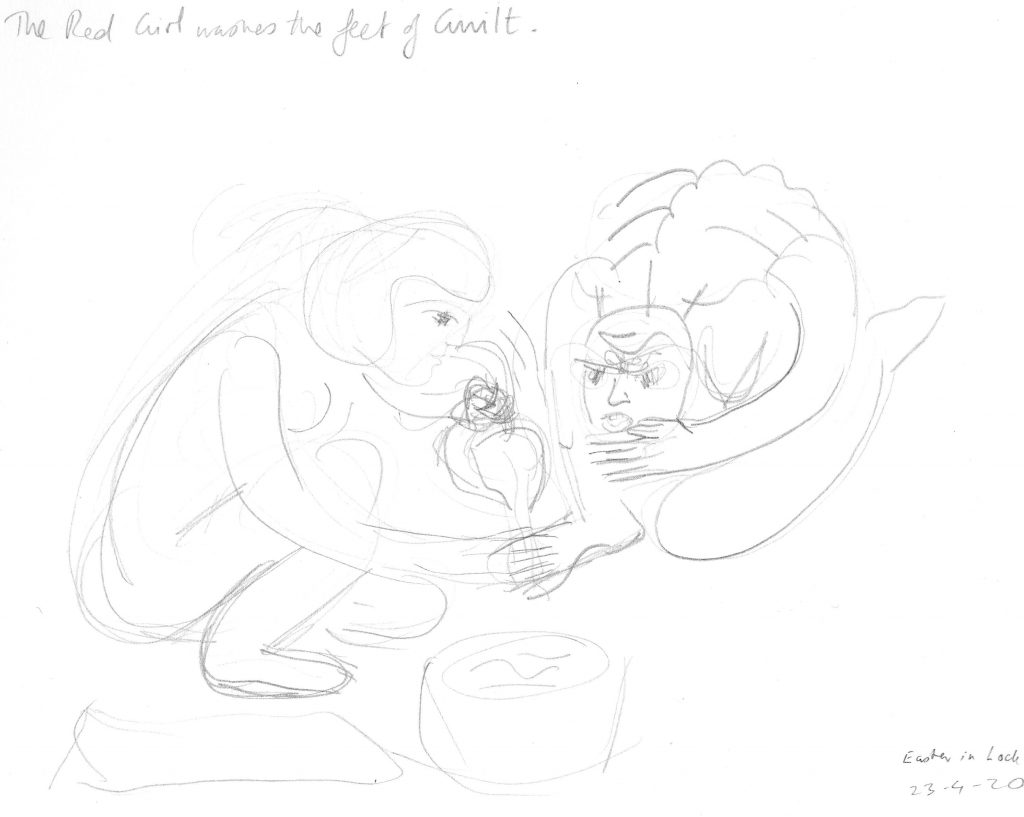
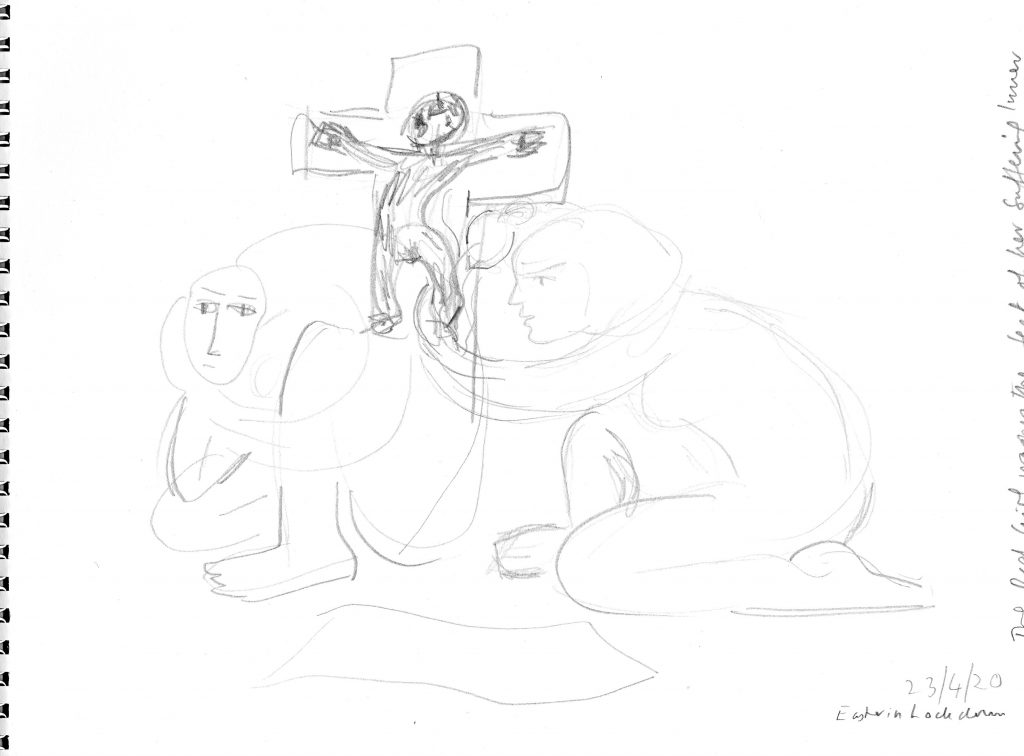
After my being inspired by prayer and giving expression to the rich world of the inner figures coming to the fore, in the quietness of lock-down, I came to see the Red Girl as washing the feet of the Crucified Girl Child, which I had felt like, unconsciously, for so many decades.
After this personal foot washing experience, where I was taking a role in the image of the figure of Christ, a figure of the archetypal Self, I set to work on my new version of the painting, the Grief Wall.
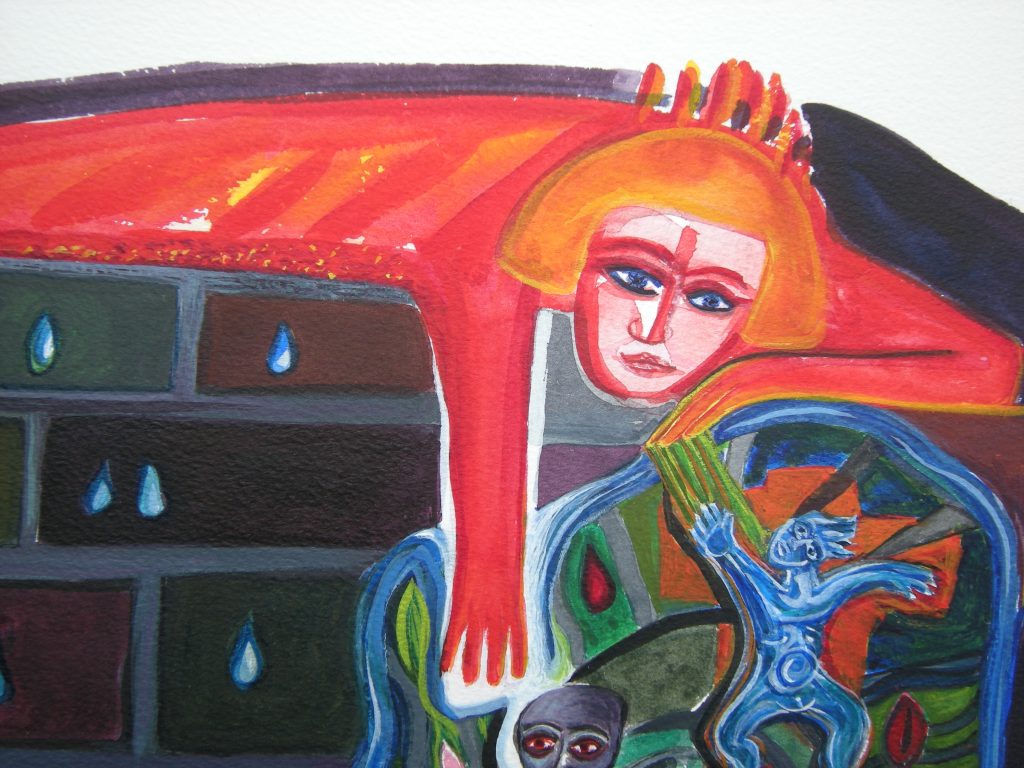
In contrast with my first version, where the Red Girl’s hand discovers by chance something moving in the wall, when I was working on this new version, twenty years later, I intentionally placed my hand into one of the tears in my Grief Wall. And I gave my new Red Girl blue eyes that were like horizontal tear drops.
With the touch of my hand, one of the tears opened up to reveal movement and life! The contrast between each carefully contained tear making a wall in 1999 where my LIFE had lain hidden in my Grief became obvious to me. I saw now how the grey and black outlines of Depression and Guilt had been the cement or mortar holding together the bricks of the wall.
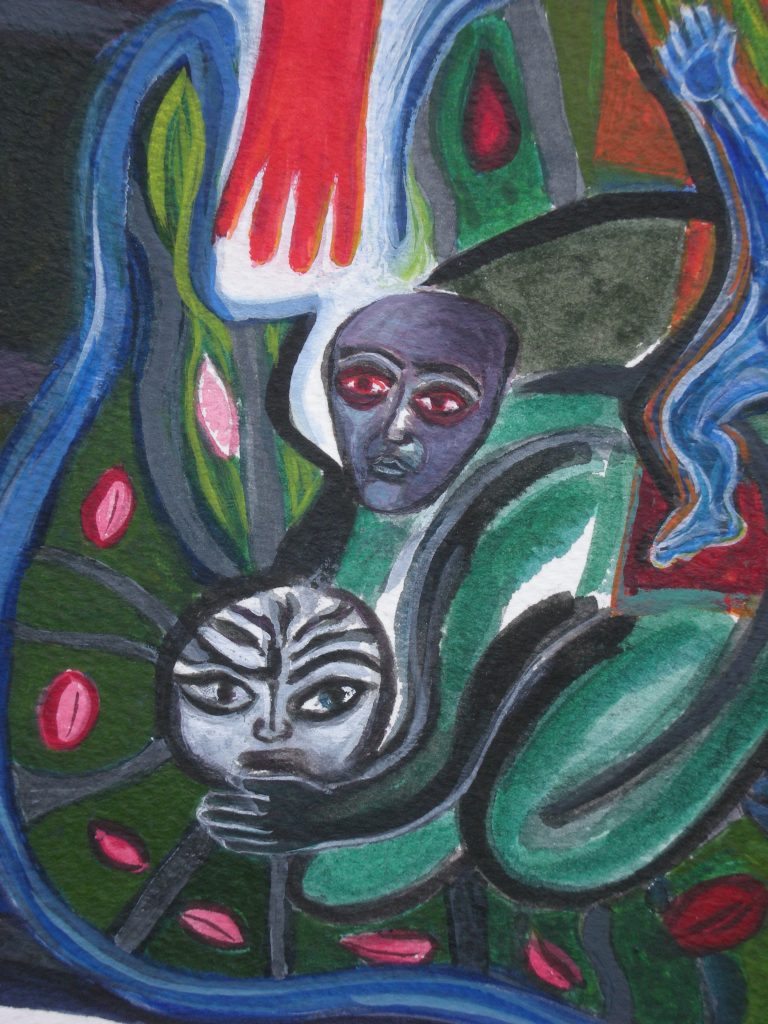
Look how these eyes are the seeds of my growing awareness of how I have carried Survivor’s Guilt with all the shame that that involves and my sense of hopelessness that nothing could change.
I had difficulty with the figure on the cross. It was Kristina Schellinski who pointed out that this could be an image of me ‘crucified’ on the lack of recognition from my mother. As I said above, I always assumed it was my brother in his death agony and the Depressed Woman was my mother constantly haunted by the nightmare of his death. It may also be this – but for my individuation, it has been crucial to admit that this is me.
In the new version of my painting, I specified that it is a female child. I also changed the colour of the child’s body to blue to connect it with water and movement yet also with the frozen tears. I need to own the shame I felt from my mother’s dismissal of my girl-ness. Irrational – yes – but never the less deeply felt to be real by me. I added in a more definite relationship between my crucified child Self and my teenage Red Girl.
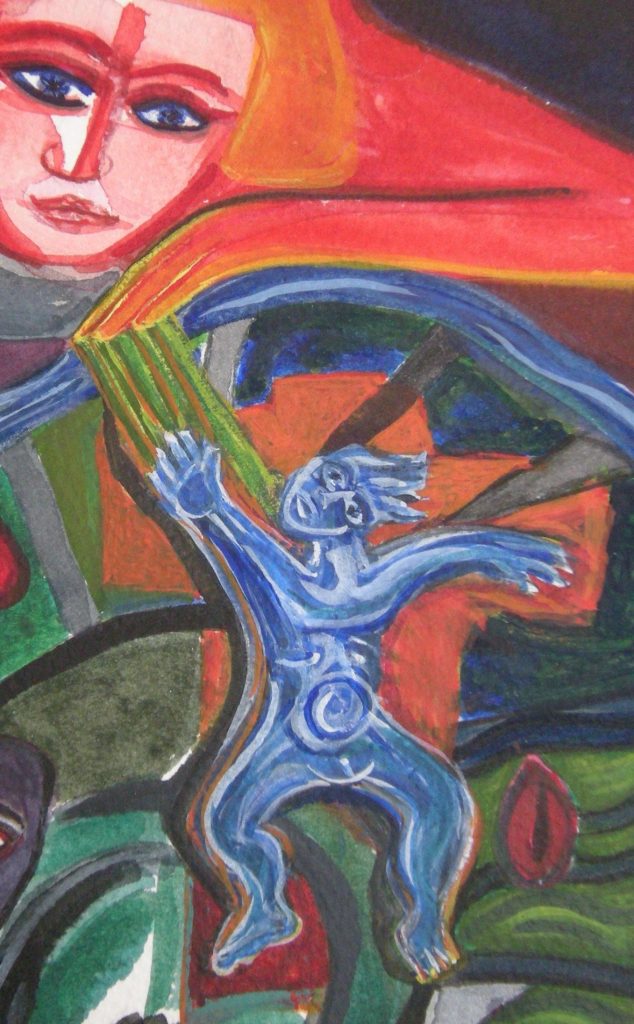
The benefits of knowing about the Replacement Child condition has been immeasurable. As mentioned in Kristina Schellinski’s book (p. 11), when I made the first set of pictures, I had never heard of this term. It all felt overwhelmingly awful. But now that I have discovered that I am not only not alone, but through the process of naming, touching and seeing – what had seemed like a special punishment for me – recognizing me having been born as a replacement child has become a source of life and joy. I love this girl now!
Caroline Mackenzie, is a UK artist and sculptress and a replacement child whose journey towards consciousness is featured in Individuation for Adult Replacement Children, Ways of Coming into being (2019), by Kristina Schellinski